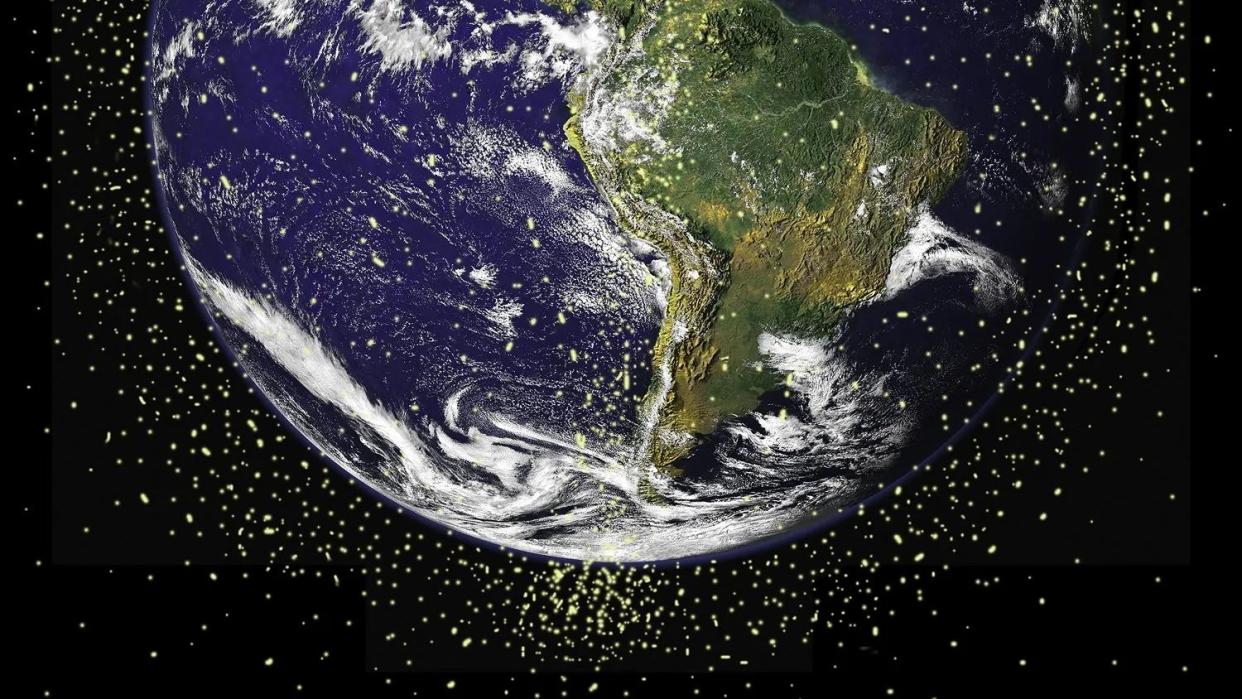A Gadget Just Took Flight to Tackle Space’s Chaos. Its Mission Could Save Us All.

Low-earth orbit satellites can sometimes tumble out of control when they reach the end of their operational lives.
A new device designed by Airbus will be attached to satellites to help dampen these erratic movements, which will help future clean-up missions capture these satellites.
The first test of the device, which Airbus calls the “Detumbler” will take place in early 2024 as part of a mission by the French aerospace company Exotrail.
Sending satellites up into low-Earth orbit (LEO) is messy business. More than 7,500 satellites currently encircle Earth in this nearby orbit, and many more are coming. So many, in fact, that the European Space Agency is prepping the first ever clean-up mission—ClearSpace-1—to tackle Earth’s space junk problem.
One of the biggest issues with regulating and maintaining satellites is that they tend to “tumble” at the end of their operational lives. Unless satellites are designed specifically to prevent tumbling, a burst fuel line, solar wind, or even drag from the upper limits of Earth’s atmosphere can send a satellite careening unpredictably. NASA has previously tested solutions for capturing these out-of-control satellites at velocities much faster than a speeding bullet, but European aerospace company Airbus is taking another approach: Don’t let them tumble in the first place.
Funded by the French Space Agency (CNES) and its Tech4SpaceCare initiative, Airbus has created a magnetic dampening device called (uninspiringly) the “Detumbler.” Attached to a satellite, the Detumbler—which was originally created back in 2021—uses a central rotor wheel and magnets to essentially interact with Earth’s magnetic field and keep satellites stable after they are long dead. When a satellite starts tumbling, for whatever aforementioned reason, the Detumbler kicks in and “induces eddy currents acting like a friction torque thus dampening the motion,” according to a press statement.

Airbus notes that the Detumbler, which weighs only 100 grams, will make future missions like ClearSpace-1 easier by removing the chaotic element of a tumbling satellite. The Detumbler will get its first major test in early 2024, as part of a mission designed by French aersospace company Exotrail. It’ll be attached to the Exo-0 nanosatellite built by the Bulgarian aerospace company Endurostat. The mission is to perform a series of “detumbling” maneuvers to test the device’s ability to keep a satellite stable.

Devices like the Detumbler and missions like ClearSpace-1 are vital if we want to continue exploring our Solar System, as scientists have theorized that space junk could become a cascading problem that threatens humanity’s ability to leave Earth entirely. First proposed by NASA scientist Donald J. Kessler, a theory known as “Kessler syndrome” explains how a certain threshold of space junk could create a cascade of collisions causing low-Earth orbit to become too deadly—or at the very least a massive headache — for satellite companies and space agencies.
Thankfully, NASA is currently crowdsourcing answers for how to clean up small space debris, as aerospace companies and space agencies around the world get serious about tidying up Earth’s cosmic “room.” And while a small, 100 gram rotor isn’t the be-all-end-all solution—it’s certainly a start.
You Might Also Like

